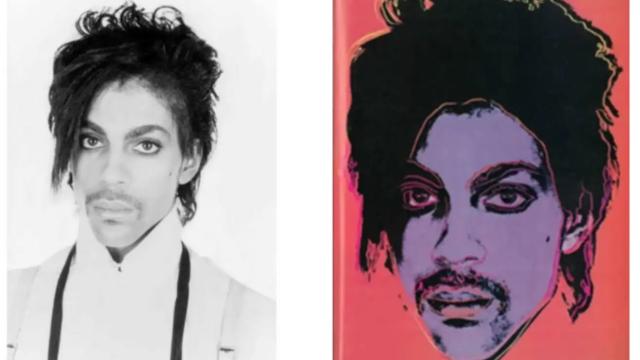The Supreme Court ruled that Campbell’s soup can painter Andy Warhol violated a photographer’s copyright when he borrowed from her 1981 portrait of Prince. It’s a case that will have sweeping implications for intellectual property law in the US.
Photographer Lynn Goldsmith sued the Warhol Foundation, arguing that the pop artist infringed on her copyright when he made a silkscreen print using one of her photographs. You don’t have to pay the original artist if it’s fair use, which is determined based on four factors: the purpose you’re using it for, the nature of the art, how substantially you used the original work, and how your new art affects the market for the original. In this case, the question came down to the definition of the word purpose.
The court found that Warhol’s silkscreen wasn’t fair use because the two works of art were both commissioned for magazine articles about Prince. It could have gone another way; the Warhol Foundation argued the purposes of the two works were different because they sent a different message, namely that Warhol’s portrait made an artistic comment on capitalism and celebrity, while the original photo was just a photo that showed what Prince looked like.
The Court chose to ignore the question of the art’s message. Several Justices fretted over the idea that judges might have to be art critics during the case’s hearing. Similarly, the court threw out the logic of a previous Second Circuit ruling, which focused on the fact that the two artworks are aesthetically similar.
Justice Sonia Sotomayor wrote in the Court’s opinion that the purpose is the important question, and in this case, the use of both works is “of a commercial nature.” Sotomayor wrote the Warhol Foundation “offered no other persuasive justification for its unauthorised use of the photograph.”
The ruling is narrow. Sotomayor wrote that the same argument wouldn’t apply to many of Warhol’s other works. While Goldsmith and Warhol’s prince photos were both for magazine illustrations, Warhol’s famous soup cans “uses Campbell’s copyrighted work for an artistic commentary on consumerism,” Sotomayor wrote. Essentially, art created for a magazine is legally different from art created for a museum, even if two works might otherwise be identical.
While it doesn’t throw the doctrine fair use out the window, even this narrow ruling will have a dramatic impact on creative work. Justice Elena Kagan and Chief Justice John Roberts disagreed with the other seven Justices. In a dissenting opinion, Kagan wrote that “Because the artist had such a commercial purpose, all the creativity in the world could not save him,” she wrote. The ruling “hampers creative progress and undermines creative freedom,” Kagan wrote, because it creates new financial dangers for artists who want to use existing work.
